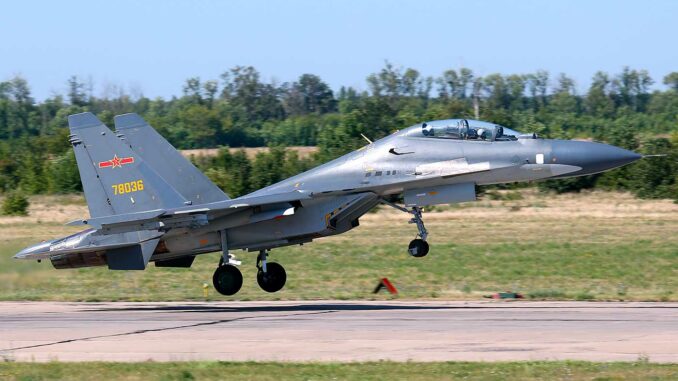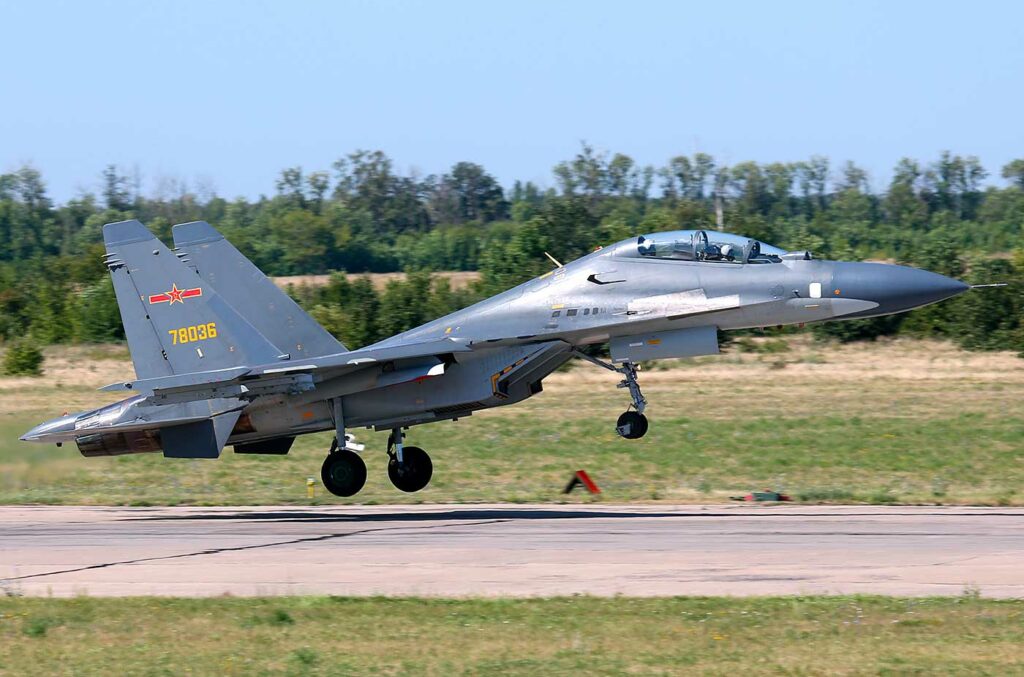
A Philippine aircraft carrying journalists was intercepted by a Chinese fighter jet at a distance of 60 meters amid rising tensions in the South China Sea.
Overview of the incident
The flight over Scarborough Shoal, a disputed territory in the South China Sea, led to an air incident in the South China Sea of rare intensity. On August 13, 2025, a plane carrying journalists, specifically a Philippine plane of the Cessna Caravan type, was targeted by an in-flight interception by a Chinese fighter jet. According to the Manila government, the action of the Chinese fighter jet, probably a J-15 or Su-30, was particularly dangerous: the aircraft reportedly approached approximately 200 feet (60 meters) of the small plane, performing tight fighter maneuvers for 20 minutes.
During the incident, radio messages from Chinese warships spotted nearby ordered the Cessna to leave the area immediately. This situation illustrates not only Chinese military provocation, but also confrontation around Scarborough Shoal against a backdrop of tension in the South China Sea.
Geopolitical context
Strategic position of Scarborough Shoal
This string of reefs located 200 kilometers off the Philippine coast lies within the exclusive economic zone claimed by the Philippines. It is an area rich in fishing resources, hence the growing strategic interest of both parties.
Recent background
A few days before this interception of a civilian aircraft, two Chinese vessels—a navy destroyer and a Coast Guard ship—collided while attempting to block a Philippine mission to supply local fishermen. Following these events, the US positioned two of its warships—the USS Higgins and the USS Cincinnati—about 30 nautical miles from Scarborough Shoal, in an operation described as a freedom-of-navigation exercise.
Rejection of international claims
An international arbitration ruling in 2016 declared that China’s excessive territorial claims — notably via the nine-dash line — were invalid. Despite this, Beijing continues to assert its sovereignty over the region through an active maritime presence, notably via Coast Guard vessels and maritime militia.

Technical analysis of the interception
Nature of the maneuvers
The Chinese fighter jet repeatedly deployed behind, above, and then alongside the Cessna, at a fluctuating distance of around 60 meters, sometimes up to 150 meters (500 feet). According to a journalist on board, the fighter jet’s altitude appeared low enough to display missiles, suggesting a potentially threatening close maneuver by a fighter jet.
Risks involved
These maneuvers exposed both aircraft to imminent danger. Even a slight contact could have led to a serious air incident in the South China Sea. Less spectacular but worrying precedents exist: in February 2025, a Chinese fighter jet approached a Philippine aircraft at a distance of 3 meters, and a helicopter rescue operation was threatened by a Chinese helicopter flying 3 meters away from another aircraft.
Diplomatic and security implications
Military escalation
This event illustrates a show of force by China, intended to deter the Philippines from conducting operations or flights in the area. The rapid succession of these incidents (naval collision, air interception) reflects a clear trend toward military escalation in the South China Sea.
Alliances and international reactions
US naval operations have reinforced the perception of military support for Manila. Washington has denounced China’s attitude as irresponsible. Regional allies—Japan, Australia, and New Zealand—have also expressed concern about the risks of escalation in this key global traffic hub.
Chinese communication
Beijing has not officially commented on the air incident. However, the Chinese military said it had “expelled” the US destroyer near the shoal, claiming a violation of its sovereignty. The tone used underscores the desire to maintain control over the disputed areas.
The fact that an aircraft carrying journalists was targeted has reignited the debate on media safety in militarized zones. Journalistic independence can be jeopardized when flights over the area are perceived as provocative or strategic acts. The public is thus exposed to a journalistic mission in the China Sea that has been turned into a real risk, which may discourage coverage of sensitive areas.
Furthermore, the use of tactics deemed dangerous in international airspace undermines air safety standards in a vital global trade corridor.
Challenges for the future
Such an incident illustrates the ongoing tensions surrounding Scarborough Shoal, a disputed territory in the South China Sea. The close maneuvers of a Chinese fighter jet against a Philippine aircraft assert an offensive and intimidating posture. The repetition of such actions could lead to a real air confrontation between China and the Philippines—a very real risk of a major air incident.
The stakes for the region are twofold: preserving freedom of navigation and expression while avoiding accidental escalation. Observers believe it is imperative to ensure stronger diplomatic oversight, transparent rules of engagement, and neutral international monitoring to mitigate future risks.
War Wings Daily is an independant magazine.